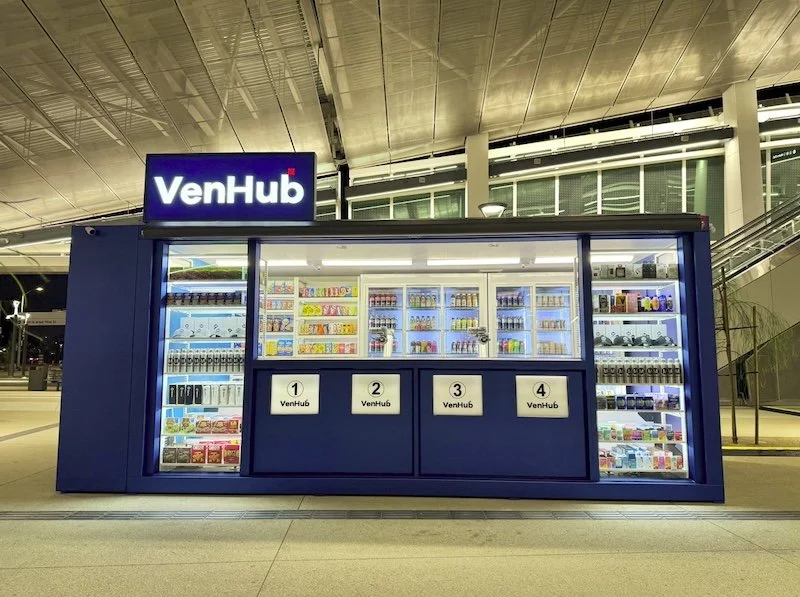Ensuring high availability of e-commerce platforms. By Kishore Kumar Pattipati, Enterprise Architect
The convenience of online shopping, coupled with its 24x7 availability, has revolutionised how consumers interact with brands and make purchases.
However, the very elements that make e-commerce so appealing also present significant challenges.
Regular maintenance, software updates, security patching, and unexpected disasters can threaten the availability of e-commerce platforms. This is where failover systems play a crucial role, ensuring continuous operation and minimising downtime.
The necessity of failover in e-commerce
Continuous availability
One of the primary reasons e-commerce has become so successful is its round-the-clock availability.
Consumers expect to shop at any time of day or night, and businesses must meet this demand to remain competitive. However, ensuring continuous availability requires addressing potential disruptions, such as server maintenance or unexpected outages.
Regular maintenance and updates
Servers must undergo regular maintenance and software updates to function optimally and securely. Without these updates, e-commerce platforms become vulnerable to cyber attacks and performance issues.
However, taking servers offline for maintenance can disrupt the user experience and lead to lost revenue. Failover systems address this challenge by allowing secondary backup servers to take over while the primary servers are being updated.
Disaster recovery
Natural disasters, cyber attacks, and hardware failures can bring down entire e-commerce platforms. In such cases, having a robust disaster recovery plan is essential.
Failover systems ensure that if the primary server fails, a secondary server automatically takes over, minimising downtime and ensuring that business operations continue smoothly.
How failover systems work
Figure 1: Failover between datacentres
Primary and secondary servers
The main motive of failover systems is to maintain a secondary backup server that automatically takes control when the primary server fails.
This transition is seamless, ensuring that users experience no disruption. Thanks to reduced hardware costs and cloud platform providers, maintaining additional servers has become more affordable, making failover systems accessible to businesses of all sizes.
Data synchronisation
For a failover to be successful and to ensure high availability of the e-commerce platform, having a backup server alone is not sufficient. Both primary and secondary servers must have access to the same data to provide a seamless user experience.
This requires maintaining a secondary database that is always in sync with the primary database. In the event of a primary server failure, all traffic is directed to the secondary server, which has up-to-date data to continue processing user requests.
Clustering for load management
Most of the time, a single node cannot handle the entire e-commerce business needs. Therefore, it is common practice to have a cluster of nodes, either in the primary or secondary setup, to handle the load from users worldwide.
Clusters distribute the workload across multiple nodes, ensuring that no single node is overwhelmed and that the platform remains responsive even during peak traffic periods. User requests are always directed to same node which holds user session context.
HTTP session failover: ensuring seamless user experience
The importance of HTTP session management
Imagine you are in the middle of an order checkout process on an e-commerce site.
You have entered your address details, but when you proceed to the next step, you are asked to log in again. Upon navigating back to the checkout page, you find that the address you added earlier is no longer available.
This frustrating experience can happen when the node serving your request fails, and another node takes over. Since the new node has no knowledge of your previous actions, you must start over.
How HTTP session failover works
Figure 2: HTTP Session failover
HTTP session failover offers a consistent and seamless user experience in such cases.
All nodes in a cluster maintain the HTTP session state in a dedicated database server. When a node processes a request from an unknown session, it first looks for the existence of the HTTP session in the database server.
If the session is found, it is restored to the new node, allowing the user to continue from where they left off. If the session is not found, the user is treated as a new user. This ensures that even if a node fails, users do not lose their session data and can continue their transactions without interruption.
For performance reasons, a high performance in-memory database is recommended to store HTTP sessions.
Evaluating the costs and benefits
Cost of lost revenue
Businesses must evaluate the cost of lost revenue when their e-commerce site goes down or when a node in a cluster fails.
Downtime can lead to significant financial losses, damage to brand reputation, and loss of customer trust. In many cases, the cost of implementing failover systems is justified by the potential revenue loss prevented by ensuring continuous availability.
Cost of maintaining backup servers
Maintaining secondary and tertiary backup servers incurs costs, including hardware, software, and operational expenses. However, cloud platform providers have made it more affordable to maintain additional servers, reducing the financial burden on businesses.
Cost of maintaining additional database servers
Keeping a dedicated database server to store HTTP sessions also involves costs.
This includes hardware, software, and database management expenses. However, the benefits of session failover, such as enhanced user experience and increased customer satisfaction, often outweigh these costs.
Overhead costs
Implementing and maintaining failover systems involves overhead costs, such as hiring skilled IT professionals, monitoring server performance, and ensuring regular updates.
Businesses must consider these overhead costs when evaluating the overall investment required for failover systems.
Conclusion
E-commerce is undeniably the backbone of success for many modern businesses, thanks to its 24x7 availability and the convenience it offers to consumers. However, ensuring continuous availability requires addressing potential disruptions through robust failover systems.
By maintaining primary and secondary servers with synchronised data, implementing clustering for load management, and utilising session failover for seamless user experiences, businesses can minimise downtime and ensure high availability of their e-commerce platforms.
While the costs of implementing failover systems, maintaining backup servers, and managing additional databases must be considered, the benefits of preventing revenue loss, maintaining brand reputation, and ensuring customer satisfaction make failover systems a worthwhile investment.
In the ever evolving digital landscape, businesses that prioritise failover systems and high availability will be better positioned to succeed and thrive in the competitive e-commerce market.
About the author
Kishore Kumar Pattipati is a highly skilled Enterprise Architect with a specialisation in SAP CRM, SAP S/4 Hana, and SAP BTP, focusing on software design, development, integration, and maintenance.
He has a proven track record of guiding clients through successful cloud transformation journeys, ensuring they achieve efficient and cost-effective solutions.
Kishore has designed innovative commerce solutions and seamless integrations across various industries, including pharmaceuticals, consumer electronics, and wireless communications.
Recognised as a subject matter expert, he excels in every phase of software lifecycle management, from design and development to deployment and monitoring.
Kishore’s proficiency in resolving critical business problems and performance issues guarantees smooth and efficient business operations. His dedication to delivering high performance solutions makes him a valuable asset in driving successful digital transformations for his clients.

































Continue reading…